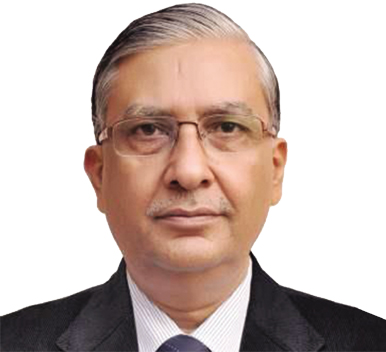On a race to deliver quick, economic, sustainable and on-time execution of projects, PEB manufacturers focus on upholding architectural values as the new feature to achieve a larger market share. Veena Kurup reports…
Construction has been a crucial facet of urbanization and evolved as amongst the prime needs for development. However, the wheel of transformation has been constantly reforming the pace of modernisation, and technology has been contributing in this revolutionary pace. Moreover, the rapid advancements witnessed in this techno epoch have raised the values of time, manpower, efficiency, sustainability and cost involved in the construction process.
 The rising need to meet the infrastructural demands of an exploding population with stress on carbon emissions led to the emergence of a sector that promised faster, easy-to-build, cost efficient and eco-friendly structures known as ‘Pre-Engineered Buildings’ (PEB). Though the PEB segment kick started its pace worldwide in the 1960s, Indian markets opened up to this quick structural solution only during the 1990s. The benefits of PEB structures in offering quick and cost effective constructions opened the Indian market for international and national players. Since then, the sector has seen a consistent upward trend, piggybacking on technology as a prime too to sustain its growth.
The rising need to meet the infrastructural demands of an exploding population with stress on carbon emissions led to the emergence of a sector that promised faster, easy-to-build, cost efficient and eco-friendly structures known as ‘Pre-Engineered Buildings’ (PEB). Though the PEB segment kick started its pace worldwide in the 1960s, Indian markets opened up to this quick structural solution only during the 1990s. The benefits of PEB structures in offering quick and cost effective constructions opened the Indian market for international and national players. Since then, the sector has seen a consistent upward trend, piggybacking on technology as a prime too to sustain its growth.
Exploring Architecture
1990 opened the economy and globalized the avenues for international and national PEB manufacturers. The sector also witnessed
the introduction of computerization in the construction process. The increasing technopenetration led to computerization of design and development processes in the technology, which are commonly used today by the indus- try as the two prime pillars of constructional reformation.
The roots of PEB structures though, can be traced back to the bamboo supported constructions; the technical transformation witnessed in the building construction industry has today moulded this basic structural concept into a refined model of metal buildings. The flexibility offered in the design layouts of PEB structure along with other benefits like ease in installation and reduced manpower further increased the scope of PEB structures in India. Known as ‘Pre-Engineered Buildings’ the sector offers diverse benefits like faster realization of project, large clear spans, superior quality, conformity to international standards, low maintenance, resistance to earthquake and cyclone and eco-friendliness in the construction process.
The wider adoption and implementation of latest technologies also helped in increasing market penetration. The emergence of a competitive market sphere enforced the PEB manufacturers to seek new modules of developing PEB structures. One such emerging trend is of adding an architectural touch by raising the aesthetic bars of PEB constructions. Few of the in-demand architectural versatilities being offered with buildings are the special fascias, canopies, curved eaves etc.
The other noteworthy aesthetic feature widely implemented by the PEB manufacturers is offering multi-layered roofing and cladding sections, mostly manufactured using zinc alloys. “Tapping these potentials, we have incorporated curved roof panels, wall claddings, flashings and aluco-bond panels to improve the aesthetic essence of the buildings. These improvements add a pleasing aesthetic touch to the pre-engineered steel buildings,” opines D Raju, Vice President- India & South East Asia, Kirby Building Systems India Ltd.
While emphasizing on the aesthetic sense, many market leaders now also focus on ability of a product utilized in PEB structure to sustain and suit distinct weather conditions. “Our pre-painted galvalume (Alu-Zinc) cladding is one such product which upholds the aesthetic sense along with total lifecycle sustainability of a structure. The multi-layer coated profiles can be used either for roofs or as walls of PEB structures,” says Malav Patel, MD, Phenix Construction Technologies.
Glazed windows, fixed ventilators, roll-up doors, roof jacks, ridge vents, roof curbs, sliding doors, turbo vents etc are the products offered as aesthetic accessories for PEB structures. “We at LOYA PEB offer pre-painted galvanized iron roofing sheets, which are made available in a range of distinct colors. The roofing solutions manufactured utilizes high tensile steel as a base material and equips coating of high quality alloy of zinc,” says Sanjay Loya, Director, Loya Pre Engineered Buildings.
Design Software
A common and most widely accepted trend adopted amongst the PEB manufacturers is the adoption of building construction software. STAADPro, CAD, STRUTS Design, Autocad, MBS, Visomax software etc are few of the most commonly used tech-solutions adopted by PEB manufacturers in adding a extra-dimensional approach to the PEB structures. The utilization of Building Information Modeling (BIM) system in the construction process has further enhanced the scope of adding an easy and multidimensional outlook for the PEB structures. The architectural versatility thus offered through the ready-to-build structures has made PEBs a preferred option not just in warehousing and industrial segment, but has also opened prospective avenues in other sectors like power, airports, hospitals, retail malls, housing, resorts, etc.
Tracking Opportunities Ahead
PEB in the developed markets has already made inroads not just in the industrial and warehousing segment but has also established
its popularity for low rise structures (G + 5). However, in the Indian scenario, PEB is considered a growing construction segment, currently at its nascent stage. However, the usage of steel, and especially PEB has been rapidly expanding, wherein the industry is presently growing at an average of 15-20 percent per annum over the last decade.
The increased emphasis on green buildings and stress on carbon emission is expected to give an additional push to the market expansion of PEB sector. Opportunities from the renewable power segment, particularly the solar projects and increasing implementation of solar rooftop installations, opens more prospective avenues for PEB sector. Besides, Indian government’s much discussed infra investment plan of US$1 trillion for the 12th Five Year Plan also assures a positive growth for the PEB sector.
Opportunities prevalent in the commercial building segment, though is presently at a nascent stage. The anticipation of a two-fold urban footprint increase and demand for increased infra facilities opens more business scope for the sector. “Building sector in India is estimated to reach a target of 20.44 billion square feet by 2030 from 7 billion square feet in 2010. Of the said indices, nearly 34 percent of the target for 2030 is already constructed and the remaining 66 percent is yet to be developed,” shares Raju.
Edge Over Conventional The segment however, within a short span of time, has succeeded in gaining an edge over the conventional and RCC structures, particularly in the low rise industrial buildings in the last decade. Cost competitiveness prevails as one of the prime reasons behind gaining a cost advantage over RCC structures over the PEB segment. As per the industry experts’ expenses towards operations within a PEB as well as their maintenance will be lower across the life cycle of the building.





















